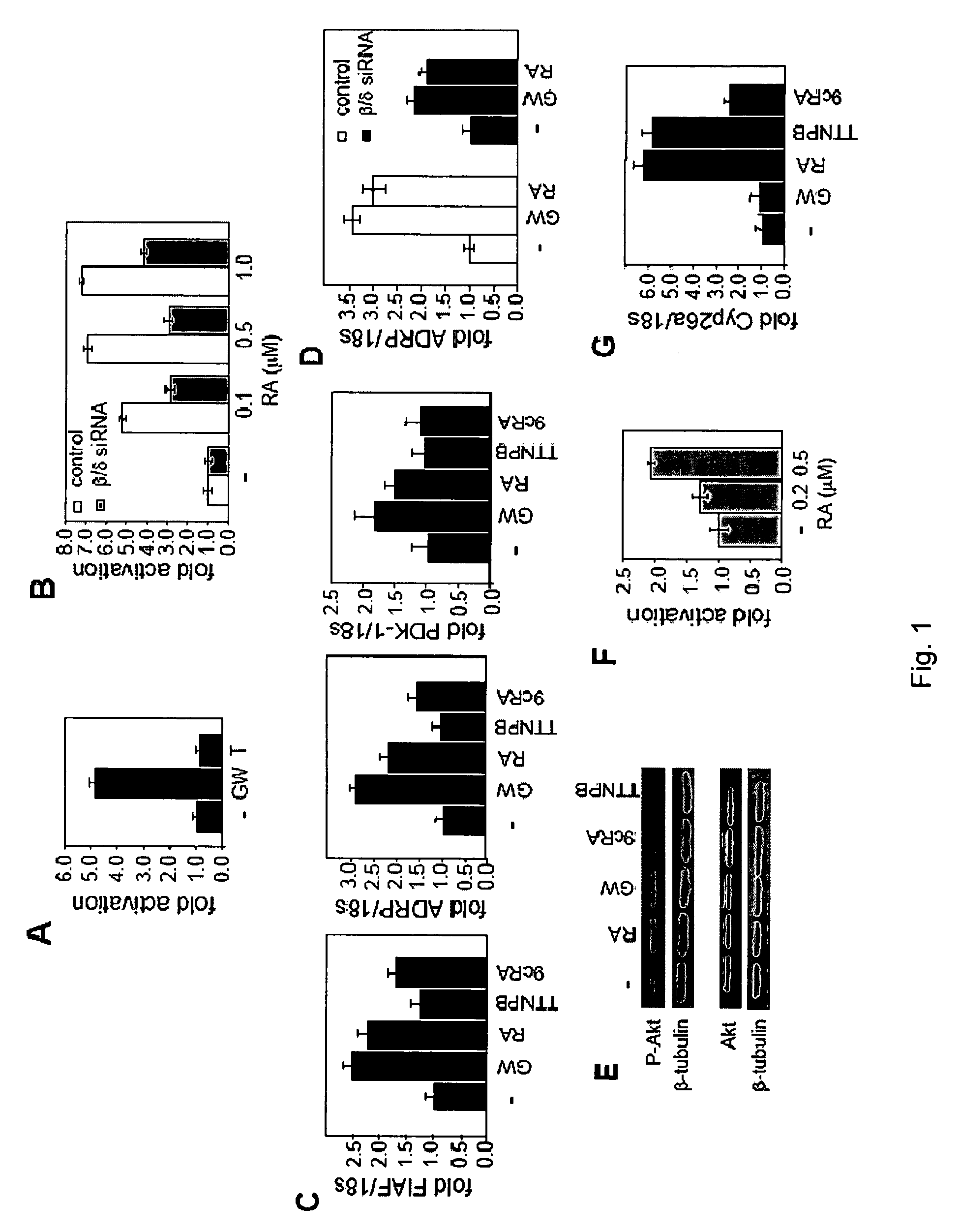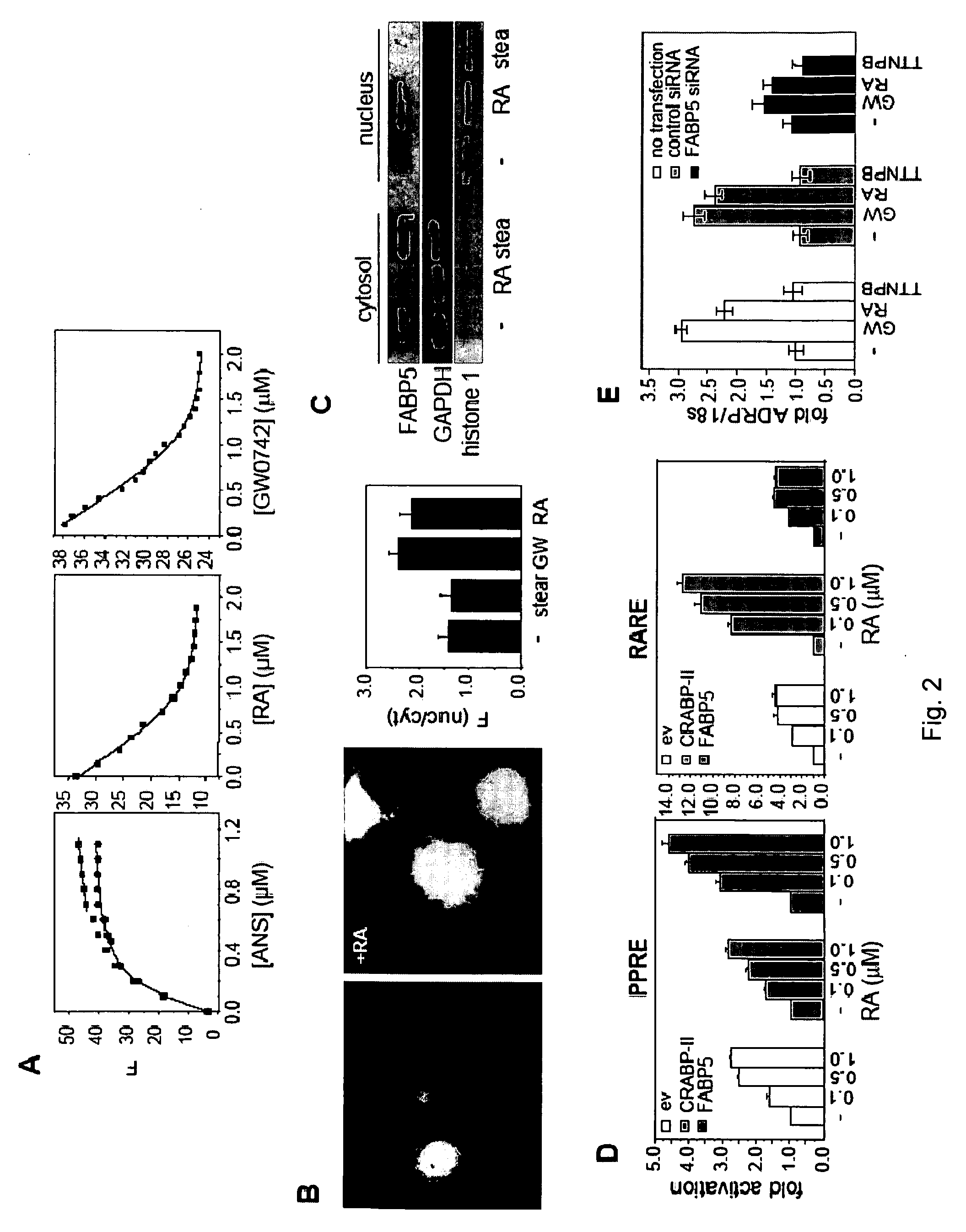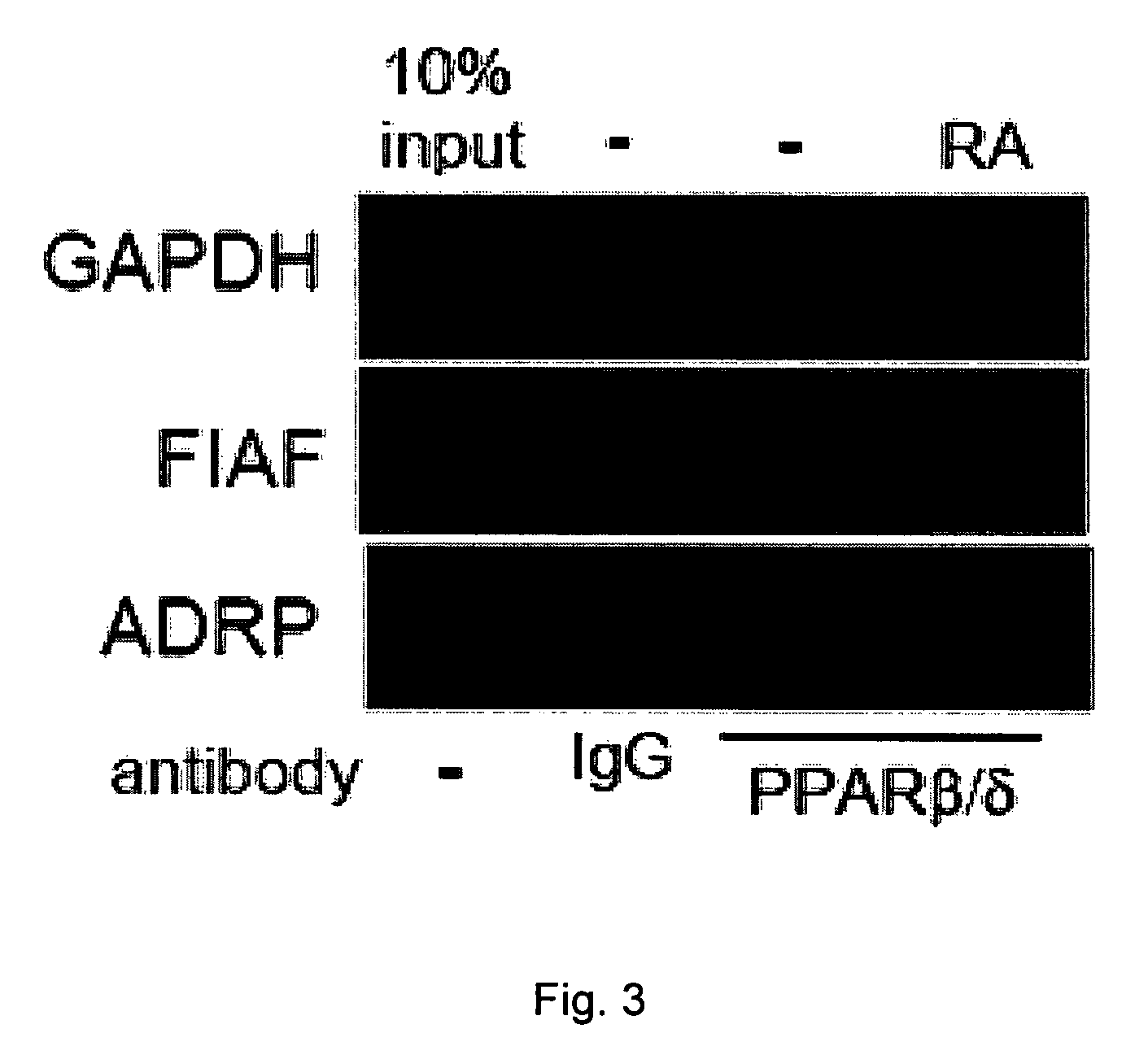Methods of treating metabolic disorders
a metabolic syndrome and metabolic disorder technology, applied in the field of metabolic disorders, can solve the problems of metabolic syndrome patients at high risk of atherosclerosis, receptor activation and upregulation of target gene transcription, and achieve the effect of increasing the insulin sensitivity of insulin resistant cells
- Summary
- Abstract
- Description
- Claims
- Application Information
AI Technical Summary
Benefits of technology
Problems solved by technology
Method used
Image
Examples
example 1
In HaCaT Keratinocytes, RA Activates PPARβ / δ in Parallel to Activation of RAR
[0053]The ability of RA to activate PPARβ / δ in the human keratinocyte cell line HaCaT was examined. Transactivation assays were conducted in HaCaT cells transfected with a PPRE-driven luciferase reporter. Cells were treated with the ligands denoted in FIG. 1 for 15 hours, lysed and luciferase activity was measured and corrected for β-galactosidase activity. Data was normalized to the basal activity. Data are mean±SEM, n=3
[0054]FIG. 1A illustrates a graph showing the results of the total activation of cells treated with vehicle or GW0742 (GW) or TTNPB (T, 1 μM). FIG. 1B illustrates a graph showing the results of the total activation of cells cotransfected with either control siRNA or siRNA for PPARβ / δ, and then treated with RA at the denoted concentrations. FIG. 1C illustrates graphs showing the levels of mRNA of the PPARβ / δ target genes FIAF, ADRP, and PDK-1 expressed from HaCaT cells treated with the denot...
example 2
[0077]One part of our concept is that retinoic acid sensitizes cells to insulin action, and that it does so by activating the transcription factor PPAR β / δ
[0078]To test this hypothesis, we treated cultured adipocytes with: 1) GW0742, a synthetic ligand for PPAR β / δ; 2) TTNPB, a synthetic ligand for the classical retinoic acid receptor (RAR); and 3) retinoic acid. We then used real-time PCR to examine the effects of these ligands on the expression of PDK1 and another known PPAR β / δ target gene, FIAF.
[0079]The data in FIG. 4 shows that both FIAF and PDK1 are upregulated in these cells in response to the PPAR β / δ-ligand, attesting to the presence and functionality of this receptor in adipocytes. The data also show that, while activation of RAR by TTNPB resulted in down-regulation of the two genes, retinoic acid mimicked the PPAR β / δ-ligand and enhanced the expression of these genes.
[0080]Hence, retinoic acid activates PPAR β / δ in adipocytes, thereby inducing the expression of PDK1, a p...
example 3
[0082]We have now completed a pilot experiment to examine the notion that all-trans-retinoic acid (RA) suppresses obesity and insulin resistance. Experiments were carried out using both cultured adipocytes and a diet-induced mouse model of obesity.
[0083]For the in vivo experiments, C57BU6J mice were fed a high fat / high sucrose diet for 16 weeks, when they weighed 1.5 fold more than a cohort fed a standard diet. The obesity of these mice resulted in insulin resistance, the underlying cause for the development of diabetes. Obese mice were separated into two groups. Both groups were continually maintained on the high fat / high sucrose diet, and one of them was systemically treated with RA.
[0084]A five week RA treatment led to a loss of ˜15% body weight (FIG. 5)
[0085]Weight loss in the mice stemmed almost exclusively from reduced weight of fat tissue, which decreased by over two fold (FIG. 6).
[0086]Remarkably, the food consumption of RA-treated mice was higher than that of the non-treate...
PUM
| Property | Measurement | Unit |
|---|---|---|
| pH | aaaaa | aaaaa |
| pH | aaaaa | aaaaa |
| pH | aaaaa | aaaaa |
Abstract
Description
Claims
Application Information
 Login to View More
Login to View More - R&D
- Intellectual Property
- Life Sciences
- Materials
- Tech Scout
- Unparalleled Data Quality
- Higher Quality Content
- 60% Fewer Hallucinations
Browse by: Latest US Patents, China's latest patents, Technical Efficacy Thesaurus, Application Domain, Technology Topic, Popular Technical Reports.
© 2025 PatSnap. All rights reserved.Legal|Privacy policy|Modern Slavery Act Transparency Statement|Sitemap|About US| Contact US: help@patsnap.com



